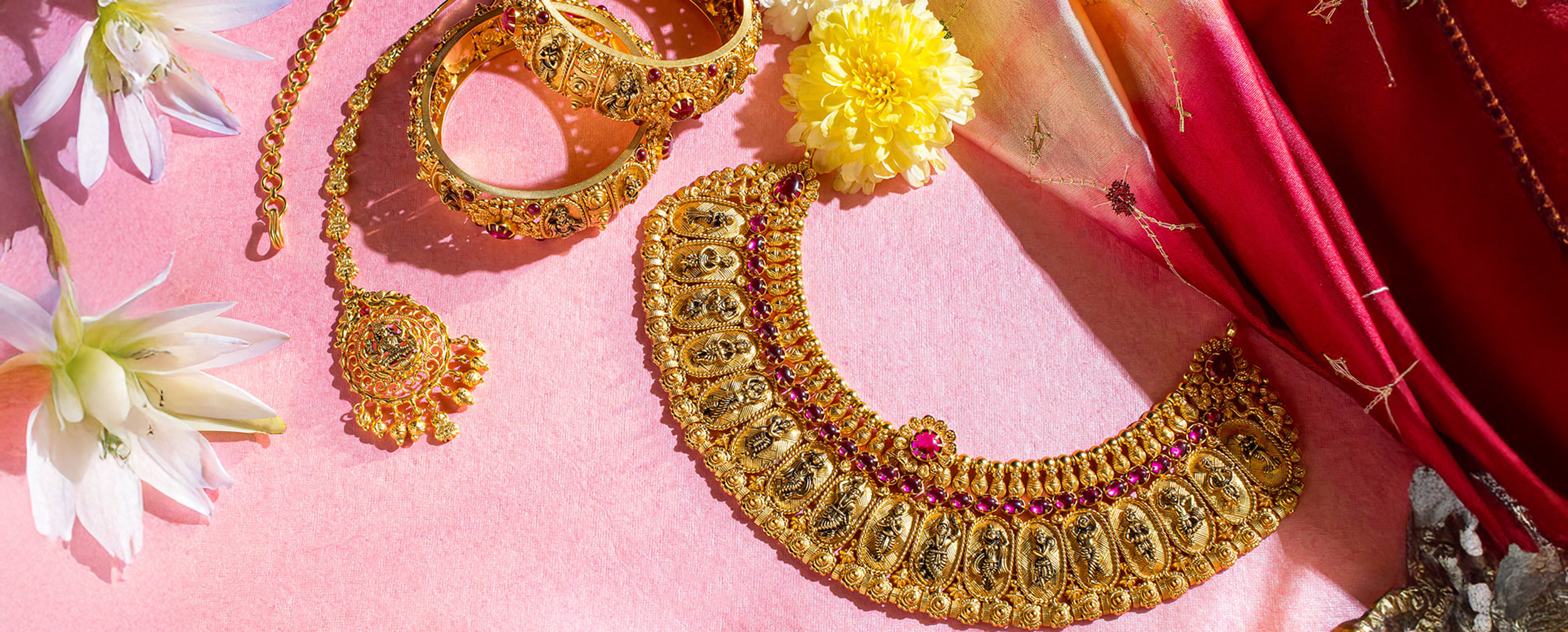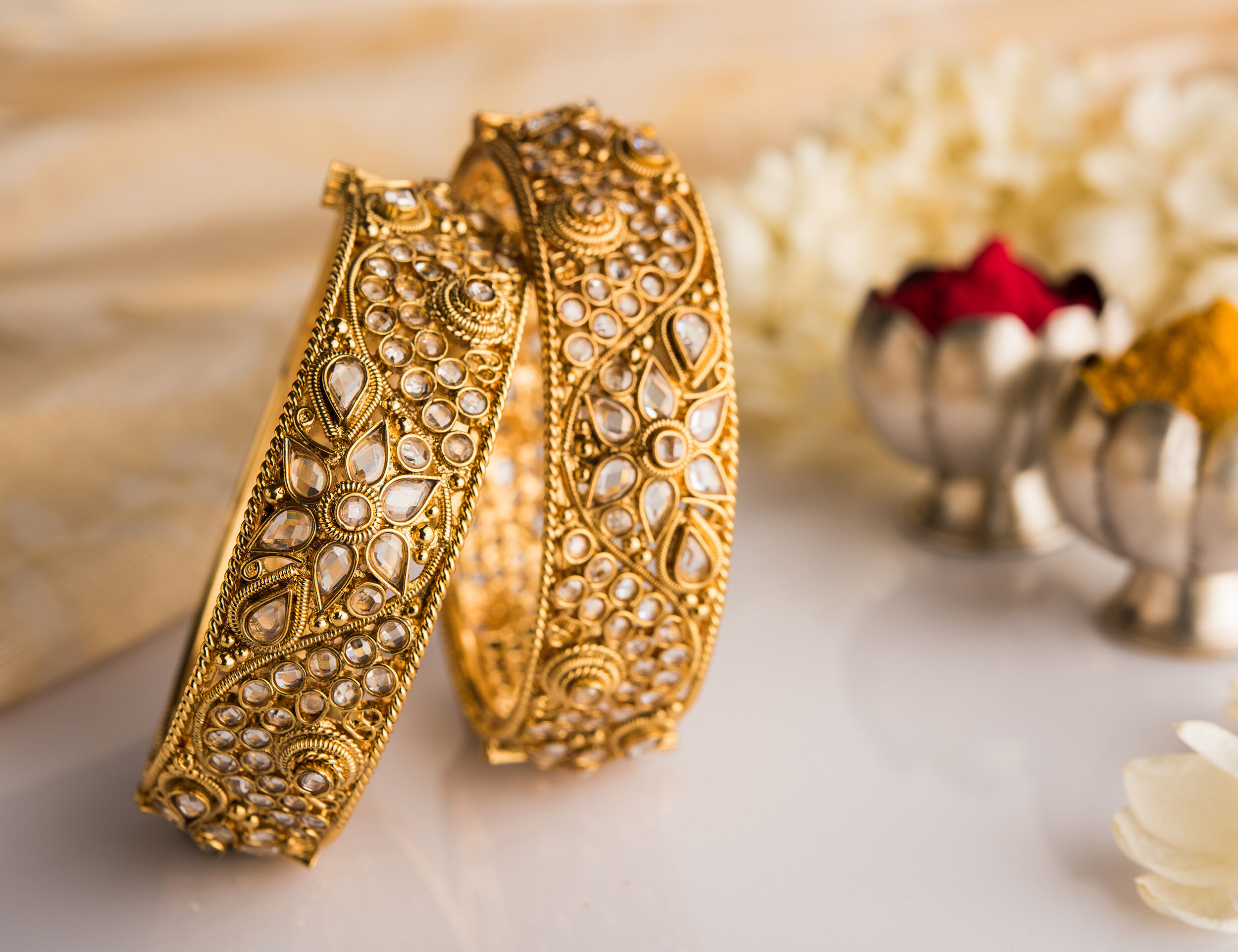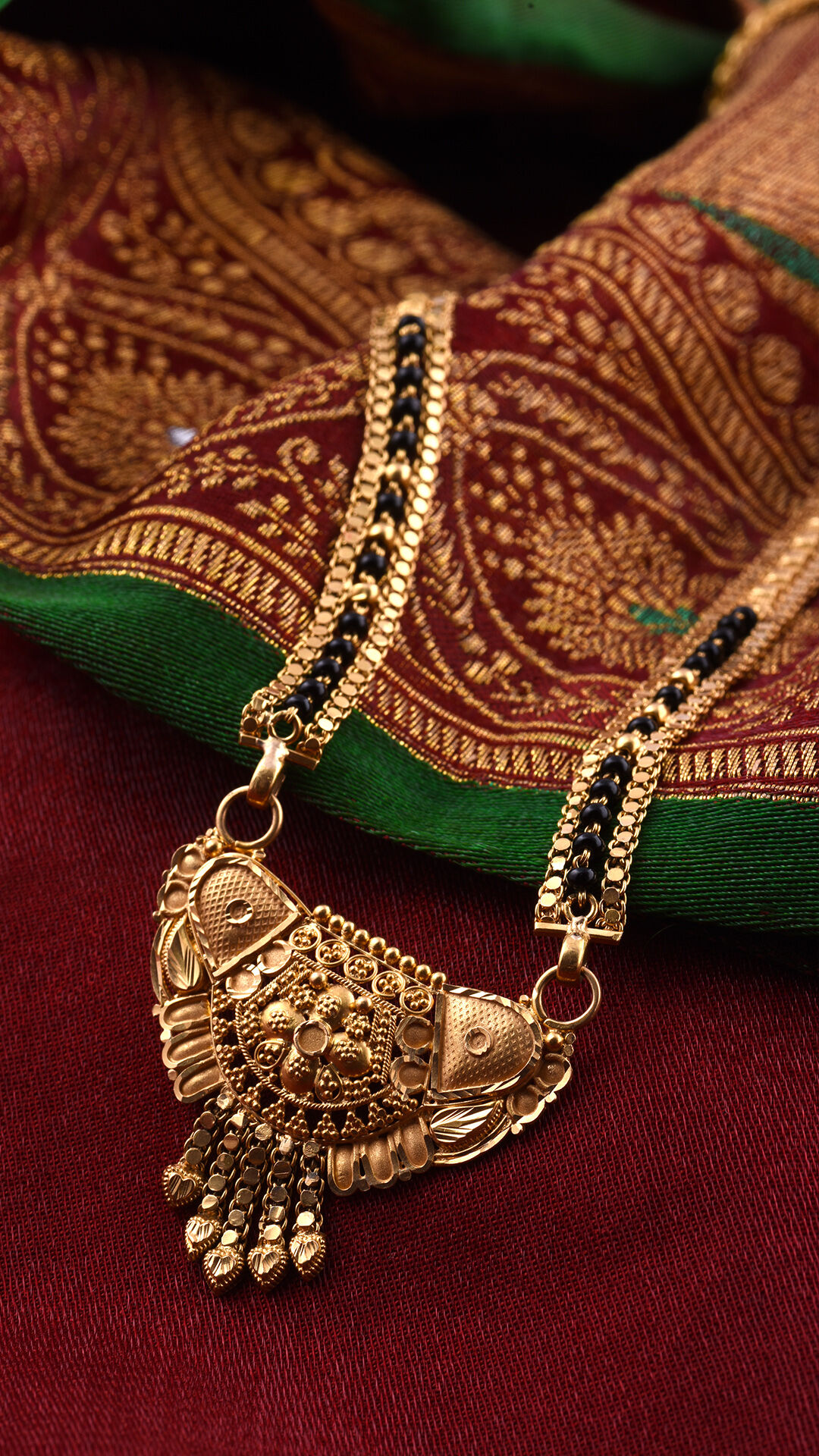STORIES BY DIWAS

Lifestyle
Gold and Glory: Uncovering the Significance of Jewellery in Dussehra Rituals
Date 16 September 2025 Reading time: 7-10 mins
The drums beat louder, victory chants fill the air, and markets buzz with shoppers. Amidst the festive fervour of Dussehra rituals, the practice of purchasing gold stands out. As families gather to celebrate good triumphing over evil, many make their way to jewellery shops, continuing a centuries-old practice of buying gold on Dussehra.
This isn't just about acquiring something shiny. The gold bought during this auspicious time—affectionately called Dussehra sona—carries deep cultural significance, promising prosperity and good fortune for the year ahead.
The connection between gold and Dussehra rituals runs deeper than mere tradition; it's woven into the very fabric of our cultural identity.
The History of Gold Jewellery in Indian Culture
Gold jewellery has been an intrinsic part of Indian culture for millennia. The Indus Valley Civilisation, dating back over 5,000 years, showcased exquisite craftsmanship in gold ornaments. From simple beads to intricate necklaces, these pieces held immense spiritual and social value.
Across dynasties and empires, gold continued to be a symbol of wealth and status. The Mughals brought their own finesse to the art, introducing techniques like kundan and meenakari. Temple jewellery, adorned with religious motifs, became a way to connect with the divine. Even as colonial influences introduced new designs, gold remained deeply rooted in the Indian way of life.
This cultural practice continues today, with practices like buying gold on Dussehra keeping alive the belief that gold brings prosperity and divine blessings.
The Importance of Gold Jewellery in Indian Festivals
In the tapestry of Indian festivals, gold is the glittering thread that ties together tradition, culture, and auspiciousness. During Diwali, Akshaya Tritiya, and especially Dussehra rituals, the demand for gold soars as people seek to invite prosperity and blessings into their lives.
- Gold is considered a symbol of Goddess Lakshmi, the deity of wealth and fortune.
- Buying or gifting gold during festivals is believed to bring good luck and abundance.
- Gold jewellery becomes an embodiment of prayers for happiness and well-being.
Significance of Gold Jewellery on Dussehra
Dussehra, known as Vijayadashami in many regions, commemorates Lord Rama's victory over Ravana and Goddess Durga's triumph over Mahishasura. At its core, Dussehra rituals celebrate the victory of good over evil—a theme that extends to prosperity overcoming hardship.
The gold acquired during Dussehra rituals is believed to carry special power—a talisman against evil and a catalyst for prosperity. Many families preserve this practice by passing down Dussehra sona through generations, each piece carrying not just monetary value but the accumulated blessings of numerous Dussehra celebrations.
How Gold Jewellery is Incorporated in Dussehra Celebrations
The gleam of gold features prominently in various aspects of Dussehra rituals. As families prepare for the celebration, incorporating gold becomes an essential part of the preparation:
1. Ritual Purchases: Jewellery shops witness long queues as people fulfil the auspicious practice of buying gold on Dussehra.
2. Gifting Rituals: Gold makes a meaningful gift for Dussehra rituals, especially from elders to younger family members.
3. Outfit Complementing: Gold jewellery perfectly complements the festive attire worn during Dussehra rituals. Men often pair a patterned mustard kurta with gold buttons or cufflinks, while women coordinate their outfits with gold ornaments.
4. Ceremonial Display: In many households, previously owned gold jewellery is cleaned, polished, and displayed during Dussehra rituals as part of the home's festive decoration, symbolising the family's continued prosperity.
5. Investment Ritual: For many families, buying gold on Dussehra symbolises both prosperity and foresight - the start of a new financial chapter.
The Role of Gold Jewellery in Dussehra Rituals
The Dussehra rituals are deeply intertwined with the symbolism of gold. In the eastern states, Durga Puja pandals are adorned with gold-plated dhanuchi and ashtadhatu kalash. Gold jewellery also complements festive attire, with men often choosing a textured kurta accented with subtle embroidery.
In North India, Ramlila performances showcase characters like Lord Rama and Sita adorned in ornate gold, underscoring their divine aura. This cultural expression mirrors the practice of buying gold on Dussehra, where the metal itself becomes a symbol of victory, prosperity, and auspicious beginnings.
Many households distribute small gold coins among family members as tokens of blessing. Dussehra rituals reinforce the spiritual and emotional significance of gold in the festival.
The Impact of Gold Jewellery on Dussehra Fashion Trends
Dussehra fashion has evolved significantly over generations, but gold jewellery remains its constant anchor.
Minimalist Gold Statements
Moving away from heavy sets, younger celebrants opt for delicate gold pieces that offer versatility beyond the festival. Small gold studs paired with festive wear kurtas for men or lightweight gold bangles with contemporary outfits reflect this shift toward wearable festive jewellery.
Regional Revival
Temple jewellery from South India, thewa work from Rajasthan, and filigree pieces from Odisha are being embraced as both fashion statements and cultural assertions during Dussehra rituals.
Fusion Styling
Modern Dussehra fashion sees interesting combinations—like pairing antique gold necklaces with contemporary solid kurtas or styling heritage gold pieces with fusion outfits.
Gold Accessories Beyond Jewellery
Gold elements extend beyond conventional jewellery to include embellished turbans, gold-work shawls, and gold-accented footwear. Men's fashion has particularly embraced this trend, with gold buttons and embroidery enhancing men's kurta options.
Styling Tips for Dussehra Gold Jewellery:
- For family functions, pair heritage gold pieces with modern outfits
- Pair gold buttons or a simple gold chain with printed kurtas for a subtle festive touch
- A gold pocket watch adds both style and symbolism to your Dussehra outfit
- Gold-accented mojaris complement cream or white pajamas for men perfectly for a coordinated festive look
Understanding the Jewellery Culture in India
To truly appreciate the significance of Dussehra sona, it's essential to understand the deeper cultural context.
The Influence of Gold Jewellery on Indian Culture and Traditions
Gold's presence in Indian culture extends beyond festivals to life-cycle ceremonies and daily rituals.
Ways gold connects to Indian traditions:
- Marking life transitions (birth, coming-of-age, marriage)
- Symbolising family continuity through heirloom pieces
- Representing divine blessings in religious contexts
- Connecting regional identities through distinctive designs
The Evolution of Gold Jewellery Designs Over the Years
Indian gold jewellery has evolved over the centuries, absorbing influences from various dynasties and cultures.
- Today, designers are blending traditional techniques with modern sensibilities to create pieces that appeal to a wider audience.
- Lightweight and minimalistic designs are gaining popularity, especially among working professionals.
- Fusion jewellery, combining gold with other metals or materials, is also on the rise.
- Classic designs like mangalsutras, bangles, and necklaces continue to be cherished for their timeless appeal.
The Golden Connection Today
As the spirit of Dussehra rituals fills the air, the glitter of gold jewellery becomes an inseparable part of the celebrations. Despite changing lifestyles and modern influences, the practice of buying gold on Dussehra remains a meaningful practice that bridges ancient wisdom with present-day aspirations.
For men looking to incorporate gold elements into their Dussehra attire, Diwas offers a collection of kurtas for men that pair beautifully with gold accessories. After all, it’s about styles that bring joy and everyone closer, making each celebration more memorable.



